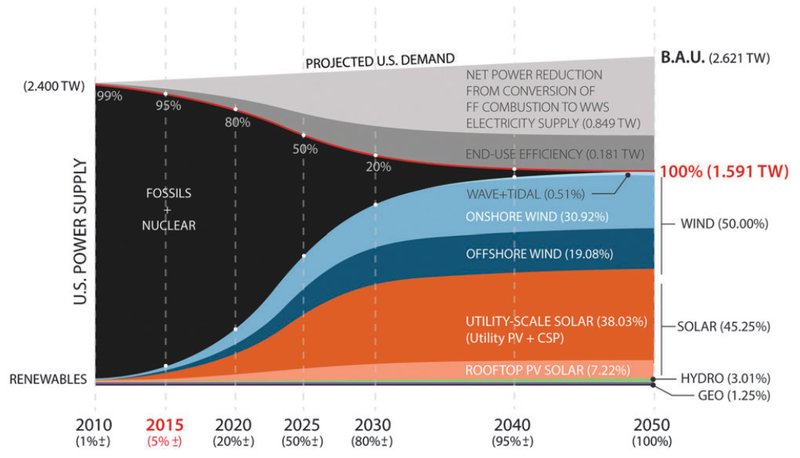
- The study wasn’t just looking at electricity — it was looking at all energy consumption, including transportation, heating and cooling, and industry. Some tweaks to industry need to be made — for instance, iron could be produced using electric arc furnaces instead of coal-powered blast furnaces. Other new technology needs to be developed, like using hydrogen to power airplanes and large ships.
- According to the study by Jacobson et al, if the United States was to use wind to generate 50 percent of energy, solar for 38 percent, and a combination of hydro, geothermal, and other renewable sources for the remainder, all energy could be supplied in the United States at a lower cost than fossil fuels by 2050.
- According to the paper, “Based on the scientific results presented, current barriers to implementing the roadmaps are neither technical nor economic. As such, they must be social and political. Such barriers are due partly to the fact that most people are unaware of what changes are possible and how they will benefit from them and partly to the fact that many with a financial interest in the current energy industry resist change.”